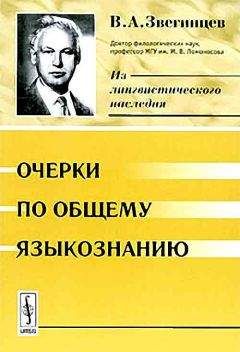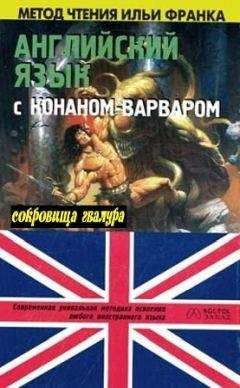Нина Пусенкова - Английский язык. Практический курс для решения бизнес-задач

Все авторские права соблюдены. Напишите нам, если Вы не согласны.
Описание книги "Английский язык. Практический курс для решения бизнес-задач"
Описание и краткое содержание "Английский язык. Практический курс для решения бизнес-задач" читать бесплатно онлайн.
Задача данного издания – познакомить учащихся с современной финансово-экономической терминологией. Первая часть книги в большей мере посвящена вопросам управления, вторая – финансовой проблематике. Темы занятий в основном соответствуют тематике курсов, которые преподаются в большинстве школ бизнеса. Уроки содержат тексты из самых разнообразных профессиональных источников и упражнения, позволяющие студентам закрепить пройденный материал. В конце учебника приводится словарь необходимой лексики примерно из 1000 слов и выражений.
Для студентов бизнес-школ, языковых, финансовых и экономических вузов, а также для всех, кто хотел бы усовершенствовать свой деловой и финансовый английский.
Source: Business Week (online), April 25, 2005 (excerpts)
Terms:
consensus, environment, micromanagement, liability, cooperation, treatment, turnaround, downsizing, exercised, helm, advisers, competitive, bankrupt, set, balance of power, mentality, performance, investigate, provided, regulators, fundamental, fees, stock options, independent, corporate governance, accounting scandal, run, destroy, consolidate, appreciate, relations, shareholder value, risk-averse, expertise, motto, shareholders, attitude, failures, effectively, claims, outside, blame, transactions, stock prices, abuses, quality, issues, deals, boards, charge, shifted, lawyers, auditors
Exercise 5. Translate into English.
Атакующий класс
Напомним схему классического корпоративного шантажа (greenmail). Атакующая структура покупает на открытом рынке некрупный пакет акций преуспевающей корпорации, после чего новоиспеченные акционеры начинают публично критиковать менеджмент компании. Помимо критики звучат и угрозы – например, обещания консолидировать более крупные пакеты акций и сменить руководство или заблокировать стратегические шаги компании. Конечной целью шантажиста является либо получение отступных за отказ от претензий, либо продажа своего пакета акций по завышенной цене. Практика greenmail на развитых рынках не слишком распространена: во-первых, западное деловое сообщество выработало систему защиты от «стервятников»; во-вторых, компания-агрессор немедленно попадает в черный список структур, вести с которыми бизнес опасно.
В России в 2000 году произошло несколько скандалов, которые были, по сути, адаптированными к российским условиям вариантами greenmail.
Встречайте нового акционера!
Стандартная версия русского корпоративного шантажа выглядит так. Некая структура приобретает на рынке крупный пакет акций компании с раздробленным уставным капиталом. Обычно речь идет о 15—25% акций «мишени». Затем новый акционер объявляет себя стратегическим партнером компании, одновременно предпринимая недружественные действия в отношении его менеджмента – от ареста ценных бумаг других акционеров под любым предлогом до организации проверок компании со стороны властных структур. Объявленная захватчиком цель – проведение внеочередного (extraordinary) собрания акционеров, на котором оппоненты агрессора будут максимально ослаблены. Когда старые акционеры поймут, что собрание может принять нежелательные для них решения, с ними можно начинать торг. Новый акционер объявляет сумму, за которую предприятию гарантировано спокойствие. Механизм передачи денег – выкуп акций по цене, в десятки раз превышающей рыночную.
Типичный пример российского корпоративного шантажа – конфликт вокруг АО «Уралхиммаш», крупнейшего в стране производителя химического оборудования. Не так давно предприниматель Павел Федулев приобрел околоконтрольный пакет акций компании. Дальнейшая борьба с оппонентами, также владеющими крупными пакетами акций «Уралхиммаша», включала в себя подделки реестра, проведение альтернативных собраний акционеров, обращения сторон в суд и к местным властям, захваты заводоуправления с участием работников милиции и частных охранных предприятий, кампании по компрометации противника в местных СМИ. Как выяснилось, нового акционера не интересовали дивиденды. Господин Федулев, спровоцировавший конфликт, в сентябре 2000 года продал акции «Уралхиммаша» структурам, близким к «Межрегионгазу». Позже в интервью «Ъ» он заявил, что весь скандал был обеспечением этой сделки и позволил увеличить цену пакета.
А вот пример greenmail, перешедшего в поглощение «мишени». В конце лета группа «Альфа-Эко» получила в дар от совладельца, торгового дома «Смирновъ», 45% акций компании. Сразу после этого ее офис был захвачен менеджерской командой группы «Альфа-Эко», а владелец 50% акций Борис Смирнов был отстранен от руководства. Сам господин Смирнов утверждает, что «Альфа-Эко» накануне конфликта предлагала выкупить у него акции торгового дома. «Их интересовали только деньги – в любой форме», – говорит господин Смирнов. Очевидно, «Альфа-Эко», начав атаку на торговый дом, выяснила, что оппонент крайне слаб, и предпочла откупным полный захват компании.
Источник: Дмитрий Бутрин. «Деньги», № 1—2, 17.01.2001 (отрывок)
Lesson 14
Corporate Scandals
Read and translate the text and learn terms from the Essential Vocabulary.
The Fall of Enron
How ex-CEO Jeff Skilling’s strategy grew so complex that even his boss couldn’t get a handle on it
To former Enron CEO Jeffrey Skilling, there were two kinds of people in the world: those who got it and those who didn’t. «It» was Enron’s complex strategy for minting rich profits from a trading and risk-management business built essentially on assets owned by others. Vertically integrated companies like ExxonMobil, whose balance sheet was rich with oil reserves and gas stations, were dinosaurs to a contemptuous Skilling. «In the old days, people worked for the assets,» Skilling stated. «We’ve turned it around – what we’ve said is the assets work for the people.»
But who looks like Tyrannosaurus Rex now? As Enron struggles to salvage something from the nation’s largest bankruptcy case it’s clear that the real Enron was a far cry from the «asset light» market maker that Skilling proclaimed. And the financial maneuvering and off-balance-sheet partnerships that he and ex-CFO Andrew Fastow perfected to remove everything from telecom fiber to water companies from Enron’s debt-heavy balance sheet resulted in the company’s collapse. «Jeff’s theory was assets were bad, intellectual capital was good,» says a former executive. Employees accepted the rhetoric, but they «didn’t understand how it was funded.»
Neither did many others. Bankers, stock analysts, auditors, and Enron’s own board failed to comprehend the risks in this heavily leveraged trading giant. Enron’s bankruptcy filings show $13.1 billion in debt for the parent company and an additional $18.1 billion for affiliates. But that doesn’t include at least $20 billion more estimated to exist off the balance sheet. Kenneth Lay sparked the first wave of panic when he revealed that deals involving partnerships run by his CFO would knock $1.2 billion off shareholder equity. Lay was never able to explain how the partnerships worked or why anyone shouldn’t assume the worst – that they were set up to hide Enron’s problems, inflate earnings, and personally benefit the executives who managed some of them.
That uncertainty ultimately destroyed Enron’s best hope for a rescue: its deal to be acquired by its smaller but healthier competitor, Dynegy Inc. Now Enron is frantically seeking a banking partner to help maintain some shred of its once-mighty trading empire. Already, 4,000 Enron workers in Houston have lost their jobs. And hundreds of creditors are trying to recover part of the billions they’re owed.
From the beginning, Lay had a vision for Enron that went far beyond that of a traditional energy company. Lay formed Enron from the merger of two pipeline companies in 1985. In just 15 years, Enron grew from nowhere to be America’s 7th largest company, employing 21,000 staff in more than 40 countries. Business gurus raved. Enron was hailed as the business model of the future. Fortune magazine named Enron the nation’s most innovative company 5 years running and, a year before Skilling’s resignation, ranked Enron among its «10 Stocks to Last the Decade». «It was a child of deregulation, of rapid technological change, of very high innovation in business practices and processes, and of a culture that sought to rewrite the rules of competition and business management,» said Robert Bruner, professor of Darden School of Business.
Lay understood that deregulation of the energy business would offer vast new opportunities. To exploit them, he turned to Skilling, then a McKinsey consultant. Skilling was the architect of an increasingly complex financial structure. After he quit in August and CFO Fastow was fired Oct. 24, there was no one left to explain it.
Much of the blame for Enron’s collapse has focused on the partnerships, but the seeds of its destruction were planted well before the October surprises. Enron was already on shaky financial ground from a number of bad investments, including overseas projects ranging from a water business in England to a power distributor in Brazil. «You make enough billion-dollar mistakes, and they add up,» says one source. In June, Standard & Poor’s put the company on notice that its underperforming international assets were of growing concern. But S&P ultimately reaffirmed the credit ratings, based on Enron’s apparent willingness to sell assets and take other steps.
Behind all the analyses of Enron was the assumption that the core energy business was thriving. It was still growing rapidly, but margins were coming down as the market matured. Skilling’s answer to growing competition in energy trading was to push Enron’s innovative techniques into new arenas, everything from broadband to metals, steel, and even advertising time and space. Skilling knew he had to find a clever way to finance his big growth plans and manage the international problems without killing the company’s critical investment-grade credit rating.
«He’s heartbroken.» No one ever disputed that Skilling was clever. He took over as production director at a startup Aurora (III.) TV station at age 13 when an older staffer quit and he was the only one who knew how to operate the equipment. Skilling received a scholarship to university in Dallas. After graduation, he went to work for a Houston bank. The bank later went bust while Skilling was at Harvard Business School. Skilling said that fiasco made him determined to keep strict risk controls on Enron’s trading business. His brother Tom, a Chicago TV weatherman, says of him: «He’s heartbroken over what’s going on there… We were not raised to look on these kinds of things absent emotion.»
Enron’s «intellectual capital» was Skilling’s pride and joy. He recruited more than 250 new MBAs each year from the top business schools. Meteorologists and PhDs in math and economics helped analyze and model the vast amounts of data that Enron used in its trading operations. A forced ranking system weeded out the poor performers. «It was as competitive internally as it was externally,» says one former executive.
It was no surprise then that Skilling would turn to a young finance wizard, Fastow, to help him raise capital for his rapidly expanding empire. Fastow was recruited to Enron in 1990 from Continental Bank. Articulate, handsome, and mature beyond his years, he became Enron’s CFO at age 36. In 1999, he earned CFO Magazine’s CFO Excellence Award. Skilling told the magazine: «We didn’t want someone stuck in the past, since the industry of yesterday is no longer. Andy has the intelligence and the youthful exuberance to think in new ways.»
But Skilling’s fondness for Fastow was not widely shared. Many colleagues considered him a difficult man, prone to attacking those he didn’t like in Enron’s group performance reviews. When he formed and took a personal stake in the LJM partnerships that blew up in October, the conflict of interest inherent in those deals only added to his colleagues’ distaste for him. Enron admits Fastow earned more than $30 million from the partnerships. The Enron CFO wasn’t any more popular on Wall Street, where investment bankers bristled at the finance group’s «we’re smarter than you guys» attitude. Indeed, that came back to haunt Enron when it needed capital commitments to stem the liquidity crisis. «It’s the sort of organization about which people said, `Screw them. We don’t really owe them anything,»’ says one investment banker.
While LJM shocked many, the deal was just the latest version of a financing strategy that Skilling and Fastow had used many times since the mid-’90s to fund investments with private equity while keeping assets and debt off the balance sheet. «They were put together with good intentions to offset some risk,» says S&P analyst Ron Barone. «It’s conceivable that it got away from them.»
Did it ever. The off-balance-sheet structures grew increasingly complex and risky. Some, with names like Osprey, Whitewing, and Marlin, were revealed in Enron’s financial filings and even rated by the big credit-rating agencies. But almost no one seemed to have a clear picture of Enron’s total debt, what might hasten repayment, or how some of the deals could dilute shareholder equity. «No one ever sat down and added up how many liabilities would come due if this company got downgraded,» says one lender. Many investors were unaware of provisions in some deals that could dump the debts back on Enron. At the same time, the value of the assets in many of these partnerships was dropping, making it even harder for Enron to cover the debt.
Подписывайтесь на наши страницы в социальных сетях.
Будьте в курсе последних книжных новинок, комментируйте, обсуждайте. Мы ждём Вас!
Похожие книги на "Английский язык. Практический курс для решения бизнес-задач"
Книги похожие на "Английский язык. Практический курс для решения бизнес-задач" читать онлайн или скачать бесплатно полные версии.
Мы рекомендуем Вам зарегистрироваться либо войти на сайт под своим именем.
Отзывы о "Нина Пусенкова - Английский язык. Практический курс для решения бизнес-задач"
Отзывы читателей о книге "Английский язык. Практический курс для решения бизнес-задач", комментарии и мнения людей о произведении.






















